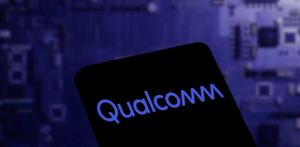As workforce expectations evolve and hybrid operations become standard, organizations are being pushed to redefine how they engage, measure, and retain talent. In the era of "Employee Experience 2.0," businesses are embracing two critical tools to drive performance and culture: data-driven onboarding metrics and real-time recognition platforms.
An analysis by the Payroll Leadership Institute of Australia has identified forward-thinking companies are no longer relying on outdated performance reviews or generic welcome programs. Instead, they're prioritizing continuous measurement and timely feedback to guide employees from their first day to their first year - and beyond.

“The employee journey begins long before their first assignment. Companies that can measure and improve onboarding effectiveness are more likely to retain top talent and reduce early attrition,” said Erica Lutz, a workplace transformation strategist. “Metrics such as time-to-productivity, new hire engagement scores, and early turnover rates offer invaluable insights.”
These analytics empower organizations to customize onboarding strategies based on data rather than assumptions, ensuring that new employees are supported in ways that are both meaningful and scalable. Whether it's gauging manager satisfaction with new hires or tracking completion rates of onboarding milestones, the data paints a real-time picture of progress.
Yet onboarding alone doesn't sustain engagement. As employees settle into roles, consistent recognition becomes a key lever for morale, collaboration, and retention. That's where technology is transforming company cultures - especially through integrated platforms that enable recognition to be instant, public, and tied to business outcomes.
Modern tools - ranging from AI-powered bots to peer-nomination systems - are embedding appreciation into daily workflows. “The days of annual awards and anonymous suggestion boxes are over. Recognition now happens in the moment, inside the tools employees already use,” said one company leader who explained the rewards system at his company.
These platforms not only spotlight individual contributions but also collect valuable insights. Companies are using real-time data to identify recognition gaps, adjust incentive strategies, and reinforce behaviors that align with organizational values. In many cases, these programs are also tied to rewards, making appreciation both personal and impactful.
Industry leaders emphasize that the synergy between onboarding metrics and recognition technologies reflects a broader shift toward intentional, experience-led management. “Retention doesn’t start when someone hands in their notice - it starts with the experience they have in the first weeks and the acknowledgment they receive in the months that follow,” Lutz added.
In today's competitive talent market, Employee Experience 2.0 is no longer a buzzword. It’s a necessity. Organizations investing in both measurement and recognition aren't just improving morale - they're building agile, connected, and high-performing teams.
Looking ahead, experts predict that the integration of onboarding metrics and recognition platforms will continue to evolve. As AI becomes more sophisticated and workplace tools more interconnected, organizations will have access to even deeper insights into employee behavior, satisfaction, and development. These innovations won’t just help HR departments - they’ll inform strategic decisions across leadership teams.
The challenge for employers now is to stay ahead of the curve. By embracing tools that empower employees and illuminate organizational blind spots, companies can foster environments where people feel seen, supported, and motivated from day one. The companies that succeed in the new landscape of Employee Experience 2.0 will be those that view engagement not as a task, but as a strategy rooted in data, empathy, and timely recognition.
https://www.youtube.com/watch?v=s3aNg22q6PU
###
For more information about Payroll Leadership Institute of Australia, contact the company here:
Payroll Leadership Institute of Australia
PLIA
info@plia.au
Brisbane, QLD, Australia







